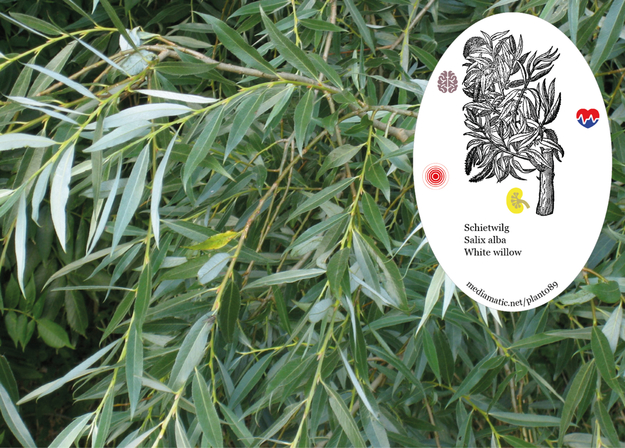Justly famous as the original source of salicylic acid (the precursor of aspirin), white willow and several closely related species have been used for thousands of years to relieve joint pain and manage fevers. The bark is anodyne, anti-inflammatory, antiperiodic, antiseptic, astringent, diaphoretic, diuretic, febrifuge, hypnotic, sedative and tonic. It has been used internally in the treatment of dyspepsia connected with debility of the digestive organs, rheumatism, arthritis, gout, inflammatory stages of auto-immune diseases, feverish illnesses, neuralgia and headache. Its tonic and astringent properties render it useful in convalescence from acute diseases, in treating worms, chronic dysentery and diarrhoea. The fresh bark is very bitter and astringent. It contains salicin, which probably decomposes into salicylic acid (closely related to aspirin) in the human body. This is used as an anodyne and febrifuge. The bark is harvested in the spring or early autumn from 3 - 6 year old branches and is dried for later use. The leaves are used internally in the treatment of minor feverish illnesses and colic. An infusion of the leaves has a calming effect and is helpful in the treatment of nervous insomnia. When added to the bath water, the infusion is of real benefit in relieving widespread rheumatism. The leaves can be harvested throughout the growing season and are used fresh or dried. The German Commission E Monographs, a therapeutic guide to herbal medicine, approve Salix / Willow for diseases accompanied by fever, rheumatic ailments, headaches. Source: https://pfaf.org/
White Willow
Salix alba
Find more about this tree on Wikipedia.
